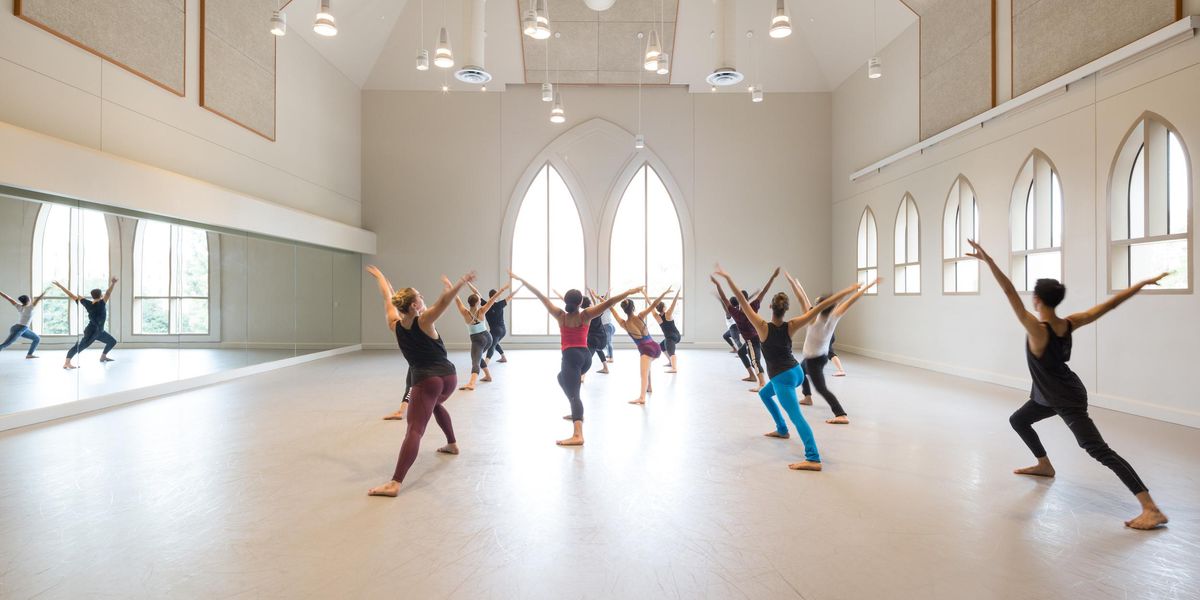Yoshiko Chuma and The School of Hard Knocks
La MaMa Moves! Festival
La MaMa E.T.C., NYC
May 9–19, 2012
Performance reviewed: May 12
Perhaps La MaMa Moves! curator Nicky Paraiso felt that he had to say something, following the dismissive review of Yoshiko Chuma’s new multimedia production that appeared in New York’s preeminent newspaper. “Art doesn’t always come in tidy packages,” Paraiso told the audience as he introduced a Saturday afternoon performance of Love Story, Palestine. “Sometimes it’s messy. Sometimes it’s fierce. And that is what Yoshiko has brought to us.”
I have to agree that Love Story, Palestine does not perfectly cohere as theater. Its messiness undercuts any potential fierceness. However, something else comes through that could prove more crucial than theatrical polish, and that is visibility, contact, connection. How many of us who often read and hear about the Palestinians—and have even formed strong opinions about their situation and concerns—have ever seen or met a Palestinian?
Chuma offered these performances for free because it was important to her that we get to meet her company’s Palestinian guests—dancers Anas Abu Oun and Sari Husseini—who, once again constrained by border laws, cannot work for money in the US.
In Love Story, Palestine, we see drawings and photo portraits of Palestinians. We listen to interviews of Palestinian artists, hear about their values and tragic losses. We watch videos of Ramallah’s El-Funoun dance troupe and, in La MaMa’s intimate space, observe the two guest dancers, live, as they perform variations on the vigorous dabke. The stomp of boots on the floor, the occasional vocalizations and flash of smiles—are all, finally, close enough.
Sari Husseini of the El-Funoun dance troup in Chuma’s
Love Story, Palestine
These are what Yoshiko Chuma has brought us. What she cannot bring in its entirety, however, is 6 Seconds in Ramallah, the piece she worked on with El-Funoun. Instead, she has patched together a part-literal and sometimes didactic, part-abstract and sometimes poetic meditation on El-Funoun and Palestine, made of movement, spoken and distributed text, video and set installations, audience interaction and live music—including a luscious, moody piano introduction and coda. It’s a lot of overlapping data to take in at once, much of it looking rushed and unsophisticated. But maybe that’s deliberate, and maybe that’s okay.
I want to tell you about a section that slowly grew on me. It centered around alternating tarps—one sunny yellow, the other in camouflage print—unfurled to engulf the floor. My memory of the sequence of events is unfortunately fuzzy, but I do recall Husseini angrily bunching up the camouflage tarp around him as if weary of all that camouflaging implies. I remember the cheerful glow of the yellow tarp sliding out from under the darker one, and I think that Chuma’s childlike open heart guided how she would tell her story to hearts that could similarly open.
All photos by Hugh Burckhardt, courtesy La MaMa Moves
Pictured at top: Sari Husseini and Anas Abu Oun of the El-Funoun dance troupe in Chuma’s
Love Story, Palestine.




